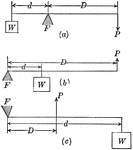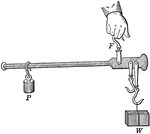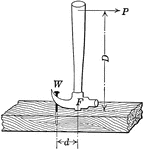Clipart tagged: ‘proportion problems’

Lever and Fulcrum
Illustration of a lever with fulcrum F. W represents the weight lifted, P is the force that does the…

Steel-yard Used as a Lever
Illustration of an ordinary steel-yard being used as a lever. F represents the fulcrum. Weight P is…

Hydraulic Machine Exerting Pressure
Illustration of a hydraulic machine. "A principle known as Pascal's Law states that pressure exerted…
